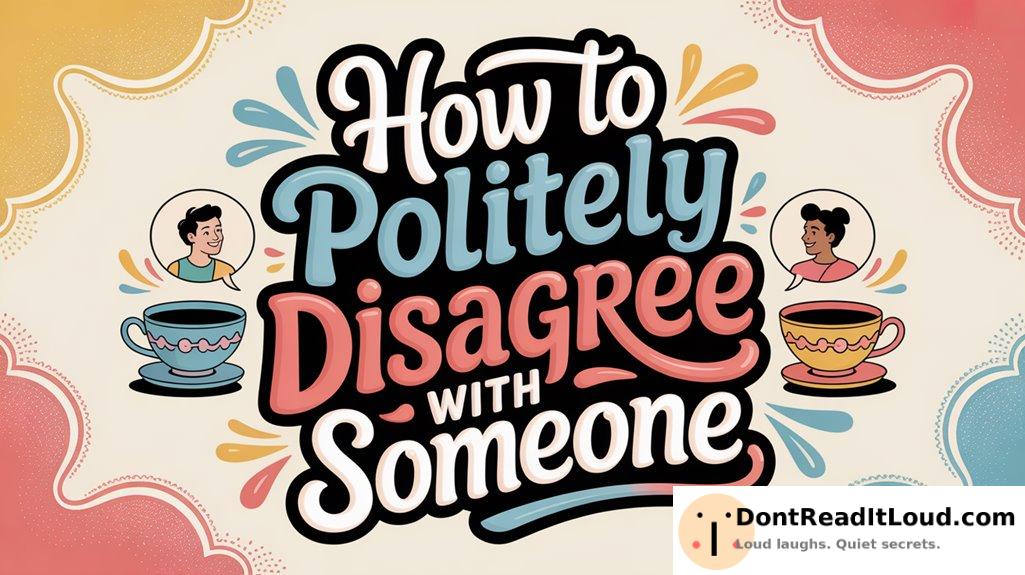
When you need to politely disagree, be mindful of cultural differences and choose a considerate tone. Begin with phrases like “I understand your perspective” to convey empathy. Using a touch of humor can help ease tension, but use it sparingly. Maintain a calm demeanor to avoid misunderstandings or conflict. Thoughtful language encourages productive conversations and keeps discussions positive. If you’re interested, there are additional ways to approach these situations.
When disagreements arise, it’s essential to handle them with tact and respect. After all, you don’t want to escalate a minor disagreement into a major conflict. Imagine you’re chatting about pineapple on pizza, and suddenly, things get as dramatic as a soap opera. To prevent that, let’s look at how to disagree politely.
First, consider cultural differences. What seems like a lively discussion in one culture might feel like an argument in another. It’s similar to how some people say “soda” and others say “pop.” Both terms are correct, but if you’re not careful, a friendly conversation can quickly turn into a heated debate. Being mindful of these differences can help you navigate disagreements smoothly. So, keep cultural awareness in mind to avoid unnecessary friction.
Next, let’s focus on tone. It’s often not just what you say, but how you say it that matters most. Picture yourself explaining why you dislike pineapple on pizza. If you sound harsh or forceful, you’re unlikely to win anyone over. Instead, try to speak gently and with understanding, and people will be more willing to listen.
Humor can also be a powerful tool. It’s like a secret ingredient that lightens the mood and brings people together. If you can add a light-hearted joke while disagreeing, you make the conversation more enjoyable. Rather than arguing, you’ll find yourselves sharing a laugh and connecting on a personal level. Just be careful not to overdo it, or it might come off as insincere.
Finally, use phrases like, “I see where you’re coming from.” It shows respect for the other person’s perspective, even if you don’t agree. This simple acknowledgment can ease tension and encourage open dialogue.
Conclusion
Respect and understanding are key during disagreements. Listen carefully and show you appreciate the other person’s point of view before sharing your own. Use “I” statements to express your thoughts without blaming. Aim to keep your tone calm and friendly. Disagreement is normal; what matters is showing empathy and kindness. Following these guidelines helps create conversations that are both respectful and productive, even when you don’t see eye to eye.



